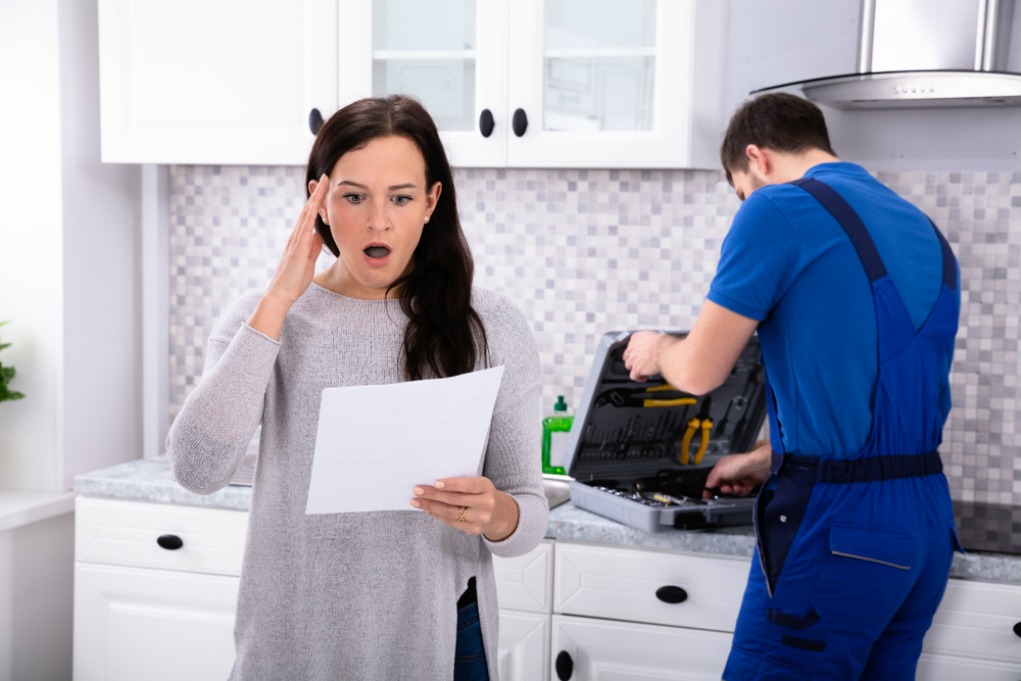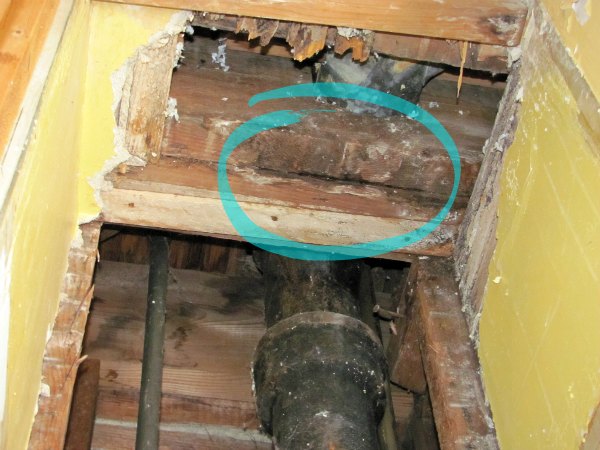The Homeowner’s Guide to Plumbing Issues in Older Homes
The Homeowner’s Guide to Plumbing Issues in Older Homes
Blog Article
The writer is making several good observations relating to Main Plumbing Issues Found in Old Houses in general in this post which follows.

Older homes commonly include beauty, personality, and history, but they can also bring a host of pipes problems. Whether you're managing maturing pipes, low water stress, or leaks, knowing exactly how to address these common issues is important to maintaining a safe and useful home. In this guide, we'll discover the typical pipes difficulties faced by older homes and give useful options to keep your plumbing in leading form.
Understanding Typical Pipes Issues
Aging Pipelines
Among one of the most common problems in older homes is maturing pipelines. Depending on the age in which your home was developed, the pipes could be made from materials that have actually deteriorated gradually, such as galvanized steel, cast iron, or perhaps lead. These products can corrode, end up being weak, or develop leakages, leading to water damage and prospective health hazards.
Water High Quality Screening
Older pipes can impact the top quality of your water. Conduct a water quality test to check for pollutants such as lead, corrosion, or various other impurities that may be presented by aging pipes.
Solutions for Typical Pipes Concerns
Replacing Aging Pipes
If your home has old, degrading pipes, consider replacing them with contemporary products like copper or PEX. This can be a substantial investment, but it will certainly protect against future issues and boost the safety and security and reliability of your plumbing system.
Fixing Low Water Stress
To fix low water stress, start by cleansing or changing old components and eliminating mineral accumulation in the pipelines. If the issue continues, it may be required to replace sections of rusty pipelines.
Repairing and Replacing Leaking Pipes
For small leakages, you can utilize pipe clamps or epoxy putty as a short-term fix. However, it's best to change dripping pipelines entirely to prevent additional damage.
Updating Components
Updating old fixtures to modern-day, water-efficient designs can enhance your home's plumbing performance and lower water intake. Try to find fixtures with the WaterSense tag for the very best effectiveness.
Handling Pipe Deterioration
If your pipelines are rusted, changing them with corrosion-resistant products like copper, PVC, or PEX is the very best solution. Normal examinations and water high quality upkeep can assist stop even more corrosion.
Low Tide Pressure
If you're experiencing low tide stress, it could be as a result of mineral deposits, deterioration inside the pipelines, or old components that are no more functioning efficiently. This can be a significant inconvenience, particularly in locations like showers and sinks.
Leaking Pipes
Leakages are an additional regular problem in older homes, frequently caused by rusty or worn-out pipes. Also little leaks can bring about considerable water damage, mold and mildew growth, and increased water bills otherwise dealt with promptly.
Obsolete Fixtures
Obsolete plumbing fixtures such as taps, toilets, and showerheads not just look old however might likewise be less reliable, vulnerable to leaks, or incompatible with contemporary plumbing standards.
Pipe Rust
Corrosion is a typical issue in older pipelines, specifically those made from galvanized steel or actors iron. Rusty pipes can limit water circulation, trigger staining, and ultimately bring about leaks or pipeline bursts.
Examining the Problem of Your Plumbing
Checking Noticeable Pipes
Begin by evaluating any kind of visible pipes in your house, such as those in basements, crawl spaces, or under sinks. Search for indicators of corrosion, leaks, or rust, which can suggest underlying concerns.
Looking for Leaks
Check for leakages by evaluating locations around taps, toilets, and under sinks. You can likewise check your water meter prior to and after a duration of no water make use of to spot covert leakages.
When to Call a Specialist
While some plumbing issues can be managed with do it yourself solutions, there are times when it's finest to call a specialist. If you're taking care of major leaks, extensive corrosion, or are uncertain concerning the condition of your pipes, a certified plumbing professional can provide experienced assessment and fixing.
Preventive Upkeep Tips
Regular Evaluations
On a regular basis evaluate your pipes system for indicators of deterioration. Catching problems early can stop expensive fixings down the line.
Water Stress Law
Guarantee your water pressure is within the recommended range to avoid stressing your pipes and fixtures. A plumbing can set up a stress regulatory authority if needed.
Water High Quality Maintenance
Install water filters or softeners if your water quality is poor. This can safeguard your pipes and fixtures from damages brought on by tough water or impurities.
Aggressive Pipeline Substitute
If your home has older pipes, consider proactive substitute prior to major issues develop. This can save you from emergency fixings and water damages.
Final thought
Handling plumbing concerns in older homes requires a mix of alertness, precautionary maintenance, and prompt upgrades. By comprehending the common challenges and understanding when to seek specialist assistance, you can ensure your pipes system stays functional and reputable for several years to find.
Common Plumbing Issues in Older Homes and How to Fix Them
Owning an older home in Australia comes with its unique charm and a set of challenges, especially when it comes to plumbing. The Sunshine Coast has many older properties that can harbour plumbing problems that aren t just inconvenient but potentially costly. Here s a look at some common plumbing issues in older homes and expert advice on how to handle them.
Outdated Piping Materials
Many older homes were built with galvanised steel, cast iron, or even lead pipes, materials that are far from ideal by today s standards. Galvanised pipes are prone to corrosion and clogging, while lead pipes pose serious health risks.
How to Fix:
Replacing old pipes is a job for a professional. Upgrading to copper or PVC piping not only enhances water quality and flow but also increases the property s safety and value. If you suspect your home has outdated materials, a licensed plumber can conduct a thorough inspection and recommend the best course of action.
Corrosion and Pipe Degradation
Over time, exposure to water and minerals can cause pipes to corrode, leading to leaks, bursts, and water contamination. Corrosion is especially common in homes over 50 years old.
How to Fix:
Regular inspections can catch early signs of corrosion. If corrosion is found, the affected section of piping often needs to be replaced. For homes with extensive corrosion, a complete plumbing overhaul might be necessary. It s crucial to consult with a plumbing expert to understand the extent of the issue.
Tree Root Intrusion
Older neighbourhoods usually have mature trees whose roots can intrude into pipe lines, causing blockages or damage. This is particularly problematic for sewer lines, where roots seek out water sources.
How to Fix:
A plumber can use a specialised camera to inspect sewer lines for root intrusion. If roots are a problem, methods like root cutting or hydro-jetting can clear the obstruction. In severe cases, part of the pipe may need replacing. Consider root barriers around the piping to prevent future issues.
Inadequate Water Pressure
Low water pressure in older homes can be due to various factors, including corroded water lines, sediment build-up in pipes, or outdated fixtures.
How to Fix:
First, check if the low pressure is isolated to one area or throughout the house. Replacing old fixtures can sometimes resolve the issue. However, if the problem is more widespread, it might be due to sediment or corrosion. Flushing the system or replacing the affected pipes usually restores normal pressure. Again, a professional assessment is advisable.
Outdated Fixtures
Older homes often feature fixtures that are not only visually dated but functionally inefficient. This includes everything from toilets and taps to showerheads and washing machine hoses.
How to Fix:
Updating these fixtures can improve both water efficiency and the aesthetic appeal of your home. Modern fixtures are designed to conserve water, which can significantly reduce your water bill and lessen your environmental impact.
Conclusion
Maintaining the plumbing in an older home requires a proactive approach. Regular checks and updates are key to preserving these beautiful properties. If you re facing plumbing issues in your older home, it s best to call on experienced professionals like Green & Gold Plumbing & Gas. With the right expertise, even the most daunting plumbing problems can be resolved, ensuring that your home s character is maintained while its functionality is enhanced.
https://gandgplumbing.com.au/common-plumbing-issues-in-older-homes-and-how-to-fix-them/

Do you appreciate reading up on Plumbing Problems In Old Homes? Write a comment down the page. We would be glad to see your ideas about this entry. We are looking forward that you visit us again in the future. Sharing is good. Helping others is fun. I praise you for being here. Kindly check our site back soon.
Click Here Report this page